 Confidential goes full throttle on the high seas. 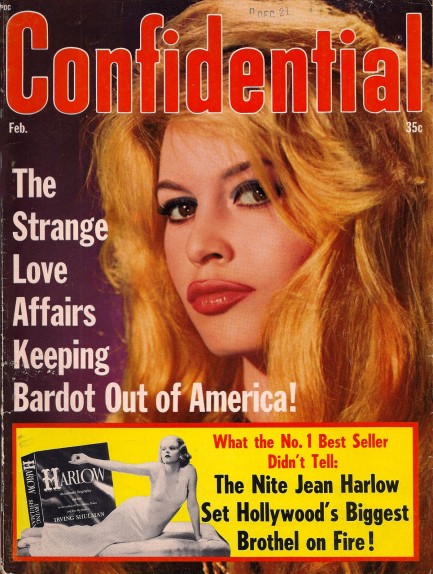
On this Confidential from February 1965 the publishers give their cut-and-paste artists a month off and grace the cover with a simple portrait of Brigitte Bardot and her famed pout. Inside the editors air out her love life in a way that today would be called slut shaming—pretty much stock-in-trade for Confidential. The suggestion is she won’t come to the U.S. to act because she’s busy Morockin’ around the clock with Moroccan-born producer Bob Zaguri. Elsewhere in the issue you get Romy Schneider, Jean Harlow, Alain Delon, Peter O’Toole, love behind the Iron Curtain, and an outraged report on pharmaceutical companies marking up medicines 200%, 500%, even 7,000%. Yes, medicines cost too much in the U.S. even back then. But don’t take our word for it. Take Confidential’s—their story ends by declaring that drug companies have Americans by the balls and the only way to avoid the drug price racket is to not get sick. But moving on, as we mentioned last week, we wanted to look at tabloid attitudes toward gay culture, and this issue has two articles along those lines. The first involves gay cruises off the Florida coast, an activity Confidential informs readers was devised as a way to avoid Dade County vice cops. Once the boats were in international waters there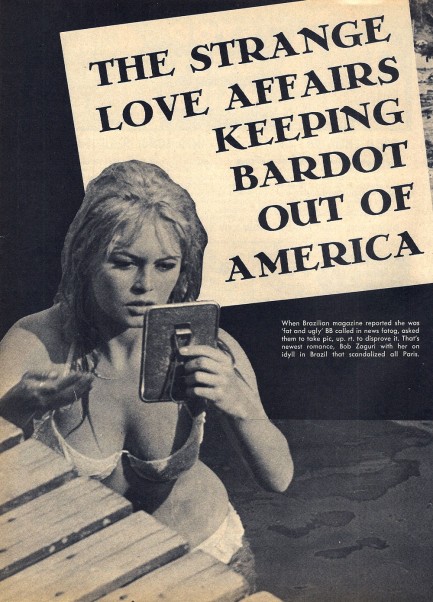 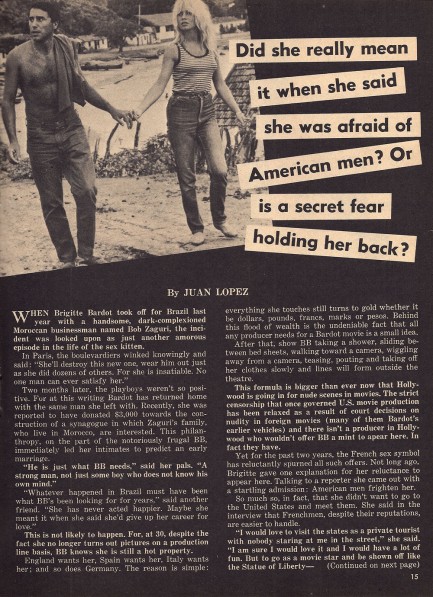  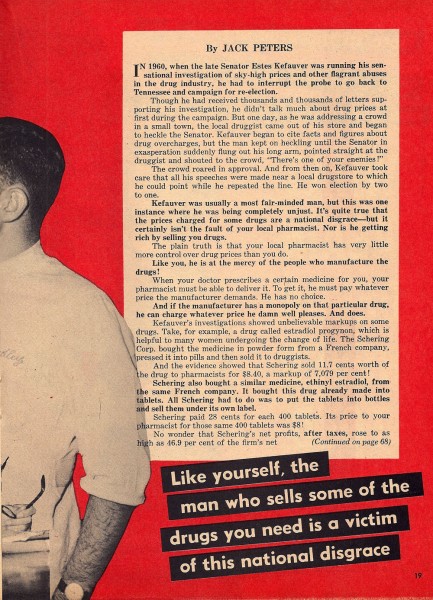 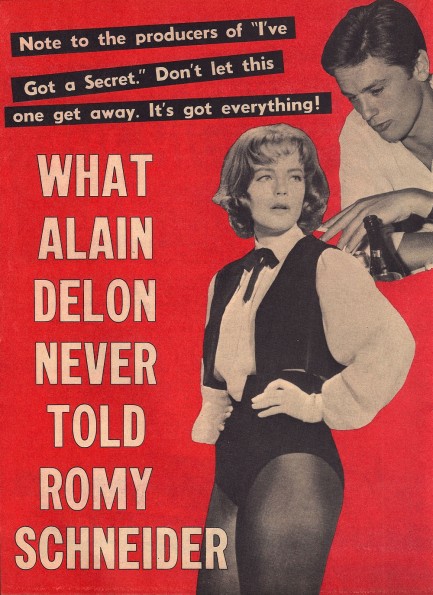 was no law, local or federal, which could be applied against shipboard activities. We’ll come back to that in a sec. The other story involves what Confidential describes as the middlesex—i.e. people who lack strong masculine or feminine characteristics. The story is concerned with this only as a social issue and makes no mention of physically intersex persons who genetically are neither male nor female. was no law, local or federal, which could be applied against shipboard activities. We’ll come back to that in a sec. The other story involves what Confidential describes as the middlesex—i.e. people who lack strong masculine or feminine characteristics. The story is concerned with this only as a social issue and makes no mention of physically intersex persons who genetically are neither male nor female. For Confidential the issue is simple—men are no longer macho enough and women are no longer (submissively) alluring enough. Of course, gay men are the ultimate villains here, and to make the topic emotional for readers Confidential paints a picture of an America devoid of Jayne Mansfields and Lana Turners. The article’s author Harold Cimoli sums it up this way: “As female busts and hips grow ever narrower even Playboy may have trouble keeping its broad-watchers supplied with bosomy playmates.” And there’s also this tidbit: “Designers of both types of clothing are poaching unforgivably on the styles of each other. The main hope must be the evolution of an entirely new style of ensemble for these new phenomena and a new branch of the industry to supply it.” Were they really this comically worried about visual identification issues? Of course they were—what could be more disturbing to guardians of a prevailing social structure than people managing to wriggle out of their pre-assigned boxes? The story on gay cruises is a bit more typical of mid-century tabloids—it’s just a takedown piece. Gay men are blithely described as “lavender lads,” “minces,” and other words we wouldn’t dare dirty our website with. The effusiveness of the magazine’s hateful and sneerful terminology suggests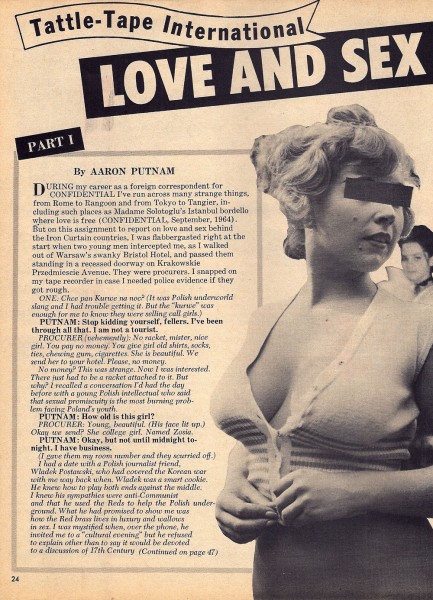 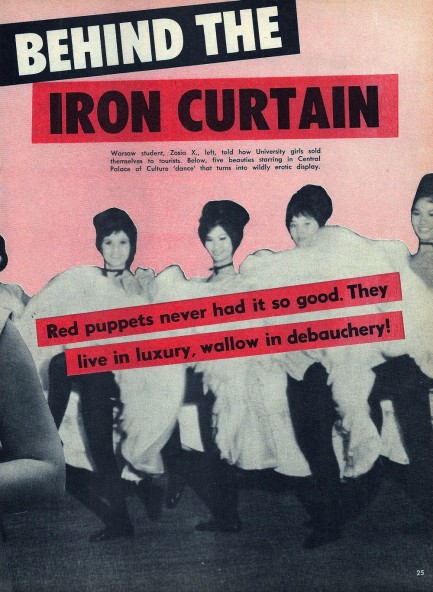 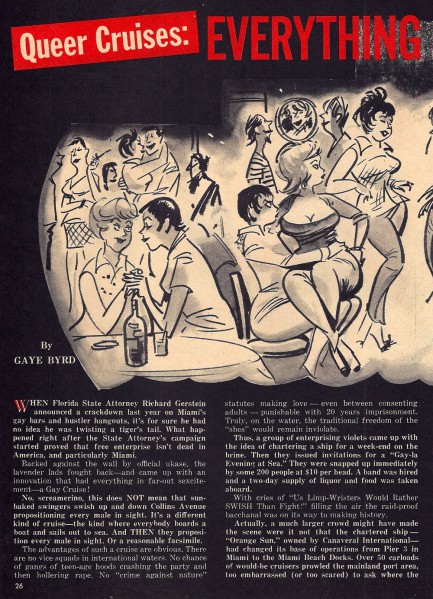 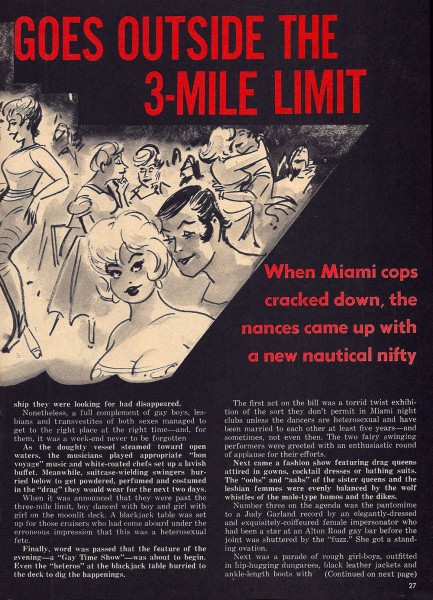 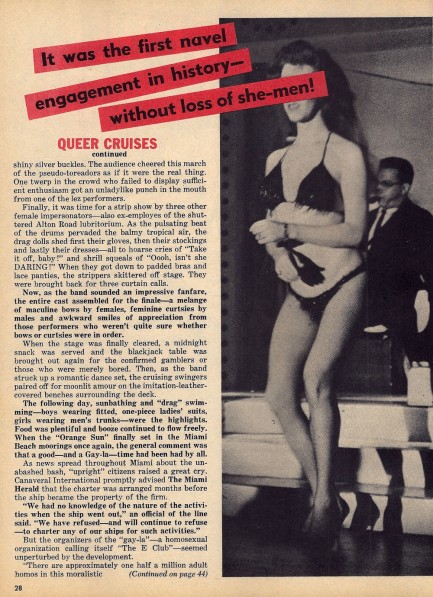 just how certain Confidential editors were that homosexuality was completely beyond the pale. And yet, nearly every issue harped on the subject, either directly or indirectly. For instance, here we get full reportage on a maritime cabaret show featuring drag queens, followed by detailed descriptions of music, dancing, and gambling. You’d almost think the writer Gaye Bird—nice, right?—was actually there. just how certain Confidential editors were that homosexuality was completely beyond the pale. And yet, nearly every issue harped on the subject, either directly or indirectly. For instance, here we get full reportage on a maritime cabaret show featuring drag queens, followed by detailed descriptions of music, dancing, and gambling. You’d almost think the writer Gaye Bird—nice, right?—was actually there. The cruise is eventually reported to the boat rental agency in Miami, whose owner vows that he will never again allow his vessels to be used for such debauchery. The response from the organizer of the cruises was this: “There are approximately one-hundred thousand boats or ships of some sort or another. I think we’ll be able to find some way to balance supply and demand.” Ouch—zinged right in the Econ 101s. Doubtless Confidential expected the congressional switchboard to light up over this outrageous appropriation of boats meant for exclusively heterosexual usage, but whether it happened we can’t say—the story ends there. And Confidential readers were left to endure thirty days of disquiet until the next gay bashing issue came out. We won't wait quite that long—we'll explore this subject in another tabloid soon. More scans below.
 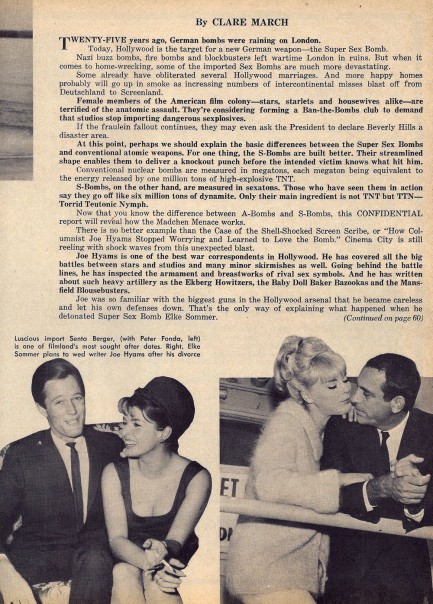 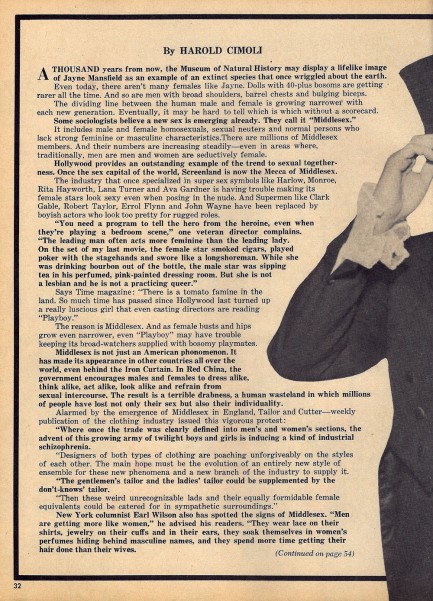 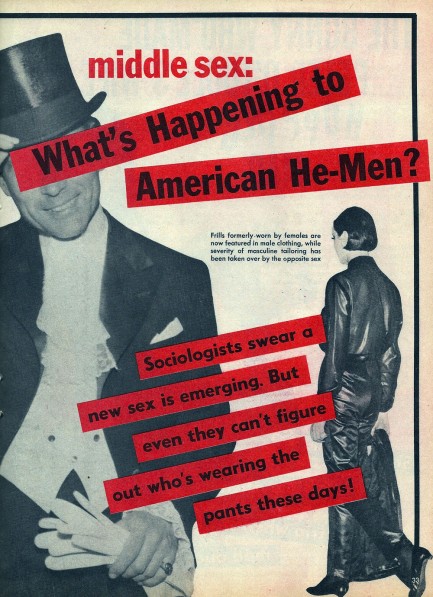 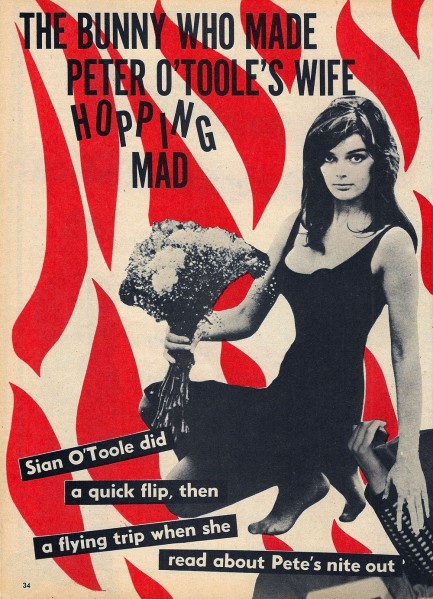 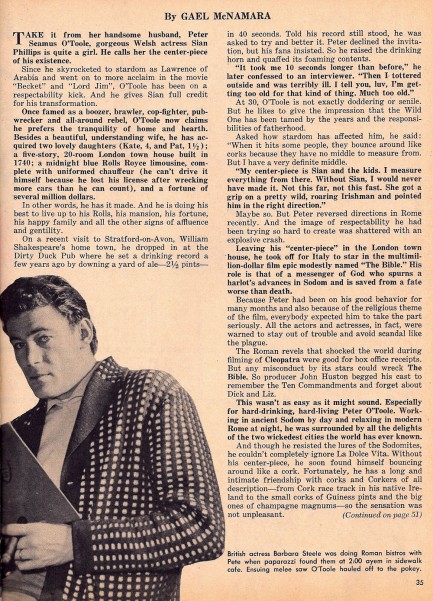 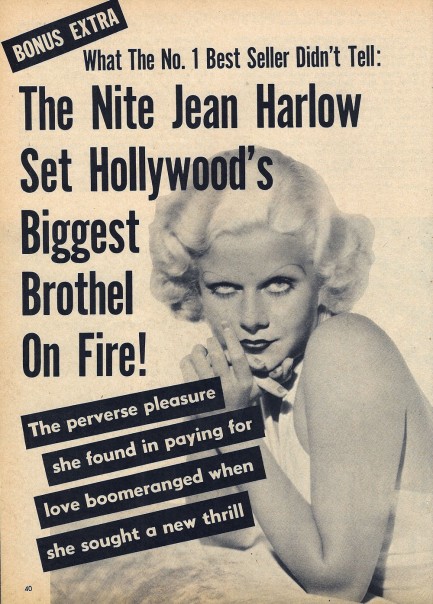 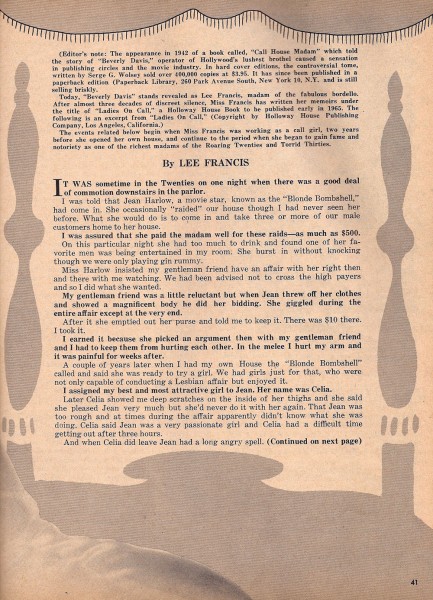
|
 |

The headlines that mattered yesteryear.
1945—Hitler Marries Braun
During the last days of the Third Reich, as Russia's Red Army closes in from the east, Adolf Hitler marries his long-time partner Eva Braun in a Berlin bunker during a brief civil ceremony witnessed by Joseph Goebbels and Martin Bormann. Both Hitler and Braun commit suicide the next day, and their corpses are burned in the Reich Chancellery garden. 1967—Ali Is Stripped of His Title
After refusing induction into the United States Army the day before due to religious reasons, Muhammad Ali is stripped of his heavyweight boxing title. He is found guilty of a felony in refusing to be drafted for service in Vietnam, but he does not serve prison time, and on June 28, 1971, the U.S. Supreme Court reverses his conviction. His stand against the war had made him a hated figure in mainstream America, but in the black community and the rest of the world he had become an icon. 1947—Heyerdahl Embarks on Kon-Tiki
Norwegian ethnographer and adventurer Thor Heyerdahl and his five man crew set out from Peru on a giant balsa wood raft called the Kon-Tiki in order to prove that Peruvian natives could have settled Polynesia. After a 101 day, 4,300 mile (8,000 km) journey, Kon-Tiki smashes into the reef at Raroia in the Tuamotu Islands on August 7, 1947, thus demonstrating that it is possible for a primitive craft to survive a Pacific crossing. 1989—Soviets Acknowledge Chernobyl Accident
After two days of rumors and denials the Soviet Union admits there was an accident at the Chernobyl nuclear power plant in Ukraine. Reactor number four had suffered a meltdown, sending a plume of radioactive fallout into the atmosphere and over an extensive geographical area. Today the abandoned radioactive area surrounding Chernobyl is rife with local wildlife and has been converted into a wildlife sanctuary, one of the largest in Europe. 1945—Mussolini Is Arrested
Italian dictator Benito Mussolini, his mistress Clara Petacci, and fifteen supporters are arrested by Italian partisans in Dongo, Italy while attempting to escape the region in the wake of the collapse of Mussolini's fascist government. The next day, Mussolini and his mistress are both executed, along with most of the members of their group. Their bodies are then trucked to Milan where they are hung upside down on meathooks from the roof of a gas station, then spat upon and stoned until they are unrecognizable.
|

|
|

It's easy. We have an uploader that makes it a snap. Use it to submit your art, text, header, and subhead. Your post can be funny, serious, or anything in between, as long as it's vintage pulp. You'll get a byline and experience the fleeting pride of free authorship. We'll edit your post for typos, but the rest is up to you. Click here to give us your best shot.

|
|






 was no law, local or federal, which could be applied against shipboard activities. We’ll come back to that in a sec. The other story involves what Confidential describes as the middlesex—i.e. people who lack strong masculine or feminine characteristics. The story is concerned with this only as a social issue and makes no mention of physically intersex persons who genetically are neither male nor female.
was no law, local or federal, which could be applied against shipboard activities. We’ll come back to that in a sec. The other story involves what Confidential describes as the middlesex—i.e. people who lack strong masculine or feminine characteristics. The story is concerned with this only as a social issue and makes no mention of physically intersex persons who genetically are neither male nor female.



 just how certain Confidential editors were that homosexuality was completely beyond the pale. And yet, nearly every issue harped on the subject, either directly or indirectly. For instance, here we get full reportage on a maritime cabaret show featuring drag queens, followed by detailed descriptions of music, dancing, and gambling. You’d almost think the writer Gaye Bird—nice, right?—was actually there.
just how certain Confidential editors were that homosexuality was completely beyond the pale. And yet, nearly every issue harped on the subject, either directly or indirectly. For instance, here we get full reportage on a maritime cabaret show featuring drag queens, followed by detailed descriptions of music, dancing, and gambling. You’d almost think the writer Gaye Bird—nice, right?—was actually there.











































































